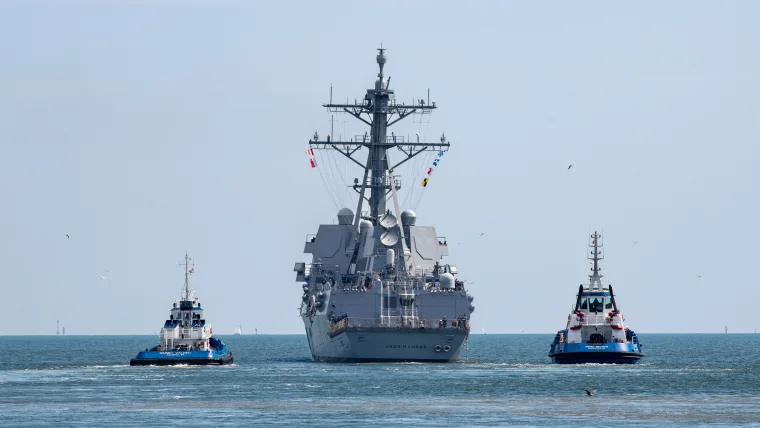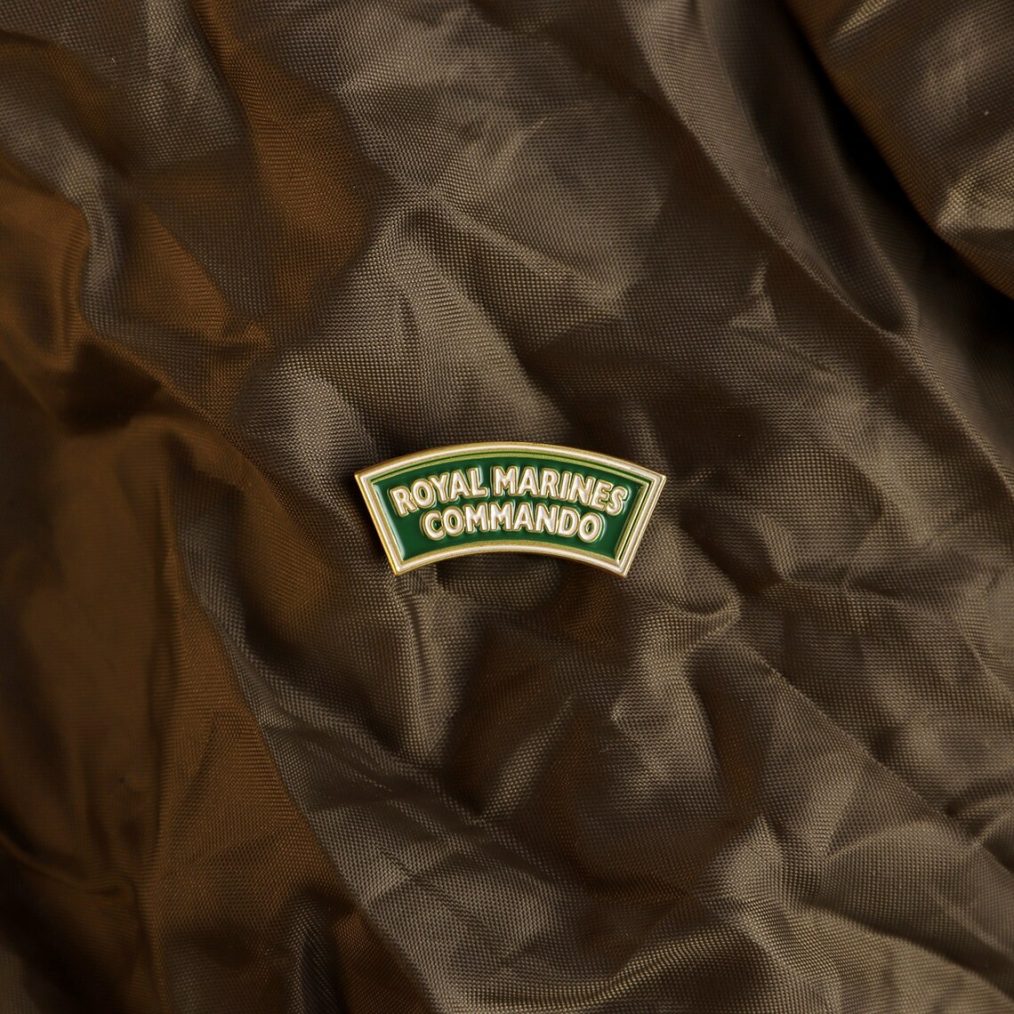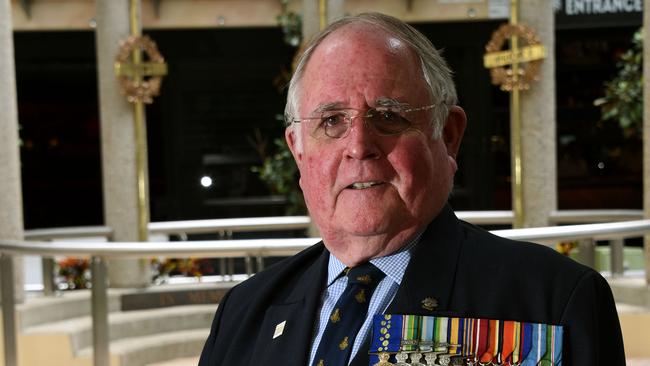The US Navy and allied navies employ various techniques and systems to counter enemy helicopters at sea. These measures are crucial for protecting naval assets, including ships and personnel, from aerial threats. Some of the common techniques and systems include:
The members of 47 Commando (Raiding Group) Royal Marines are specialists in small craft operations and amphibious warfare for the UK Commando Force. And they are about to become more lethal and agile thanks to the brand-new Commando Raiding Craft.
Australia’s Defence Honours and Awards Appeal Tribunal released a comprehensive report on Tuesday, recommending the posthumous honouring of Warrant Officer Kevin “Dasher” Wheatley and Warrant Officer Ron “Butch” Swanton for their overlooked acts of gallantry during the Vietnam War. The tribunal advocated for both soldiers to be awarded the Medal for Gallantry.
Swanton’s commendation was based on his courageous attempt to rescue a wounded Vietnamese soldier amidst enemy fire. Despite sustaining mortal wounds himself, Swanton displayed extraordinary bravery.
Initially, a military official dismissed the idea of honouring Swanton, citing that his actions were expected of all service personnel in preserving the life of a comrade. However, the tribunal’s findings supported the recognition of Swanton’s valour.
Wheatley, who was already posthumously awarded the Victoria Cross and the United States Silver Star, would further solidify his place in Australian military history if the recommendation is accepted. His previous accolades include being appointed a Knight of the National Order by the former Republic of Vietnam and receiving the Military Merit Medal and Cross of Gallantry with Palm.
Both Wheatley and Swanton tragically perished together in Vietnam on November 13, 1965, near a paddy field. Wheatley’s refusal to abandon Swanton, despite knowing their impending demise, led to his Victoria Cross recognition.
Chris Hartley, a close friend of the Wheatley family, initiated a campaign to acknowledge Wheatley’s bravery. This effort culminated in the retrieval of Wheatley’s long-delayed US Silver Star and prompted further investigation into other denied commendations.
Among the evidence presented was Wheatley’s act of rescuing a terrified young girl amidst heavy gunfire in May 1965. Despite recommendations for his gallantry going unheeded, Wheatley continued to display remarkable courage throughout his service in Vietnam.
The tribunal’s decision to recommend the Medal for Gallantry was influenced by Wheatley’s exemplary actions and the injustice of previous denials. Wheatley’s son, George, expressed gratitude for the tribunal’s thorough review and highlighted his father’s unwavering dedication to his comrades’ safety.
Despite initial reluctance from defence, military, and political figures to honour Wheatley, Queen Elizabeth II intervened to ensure the Victoria Cross citation accurately reflected his exceptional bravery.
Wheatley’s widow, Edna, faced numerous challenges following his death, including disputes over repatriation and financial struggles. However, public support and media attention eventually led to the return of Wheatley’s remains and the preservation of his medals.
Kerry Stokes, a prominent figure, intervened to prevent the sale of Wheatley’s medals and ensured their placement at the Australian War Memorial.
George Wheatley, now 69, expressed pride in his father’s legacy and appreciation for the government’s support of the tribunal’s findings. The government, represented by Defence Personnel Minister Matt Keogh, pledged to consider the tribunal’s recommendation.
Kevin Arthur “Dasher” Wheatley, VC, and Ronald James “Butch” Swanton are interred at respective locations, with Wheatley at Pinegrove Memorial Park and Swanton at Mount Thompson Memorial Gardens.
The complete findings of the tribunal are available on the Defence Honours Tribunal website.
The performance of bullets in terms of stopping power, lethality, and range has sparked considerable debate. Critics have pointed out perceived shortcomings, advocating for an intermediate-sized cartridge between the 5.56 and 7.62 NATO sizes. Conversely, some argue in favor of the M855A1 Enhanced Performance Round (EPR), citing its purported improvements in barrier penetration and accuracy.
Criticism surrounding range, accuracy, and lethality often ties back to differences in barrel length and twist between the M16 and M4 rifles. Hit probability, crucial for a soldier’s effectiveness in combat, varies notably between these two cartridges due to differences in recoil and noise.
Comparatively, the 7.62 NATO boasts twice the impact energy of the 5.56 NATO, making it preferable for targets shielded by higher-level armor, particularly at medium range. When fired from a 20-inch barrel, a 5.56 NATO round exhibits a flatter trajectory than a 7.62 NATO round of equivalent length. However, a 5.56 NATO round fired from a 14.5-inch barrel matches the trajectory and time of flight of a 7.62 NATO round fired from a 20-inch barrel.
Notably, a 7.62 NATO round rapidly achieves 50 percent of its velocity within a short distance from the barrel upon firing. Consequently, reducing barrel length for close-quarters combat increases muzzle pressure, leading to heightened noise and muzzle flash.
Museum Assistant Manager and former tank commander, Jason, takes us through the Aussie Leopard AS1 Follow the progress of our workshop restorations every Workshop Wednesday! A must watch for students of history, engineering, mechanics and metalworking!
Denmark’s Defence Minister issued a stark warning on Friday, suggesting that recent intelligence points to the possibility of Russia launching an attack on a NATO member nation within the next three to five years. Troels Lund Poulsen emphasized that while there’s no direct threat to Denmark, Russia’s significant advancements in military equipment production raise concerns.
Poulsen stated, “There’s a plausible scenario where Russia might challenge Article 5 and NATO’s solidarity within the next few years, a notion that wasn’t prevalent in NATO’s assessments just last year. This emerging understanding is cause for heightened vigilance.”
Highlighting Russia’s ongoing conflict with Ukraine, now surpassing 700 days, Poulsen’s sentiments echo those of German Defence Minister Boris Pistorius, who recently advised NATO to prepare for a potential Russian aggression within the next five to eight years.
NATO’s Article 5 stipulates that an attack on any member nation is considered an attack on all members, warranting collective defence measures. This principle underscores the importance of readiness and unity within the alliance.
In response to these perceived threats, NATO has initiated its most extensive military exercises in years. Dubbed Steadfast Defender 24, these drills involve around 90,000 personnel and aim to demonstrate NATO’s capability to defend its territories, including those bordering Russia, in various operational scenarios.
The exercises, scheduled to run for several months until the end of May, simulate a range of conflict scenarios with a focus on countering near-peer adversaries like Russia and combating terrorist organizations. NATO’s evolving defence strategies reflect the shifting geopolitical landscape and the need for a robust response to emerging security challenges.
(Follow me chaps, I’m right behind you!)
 THE Australian Army has rarely been proactive to technological developments, preferring historical adjustment over radical change.
THE Australian Army has rarely been proactive to technological developments, preferring historical adjustment over radical change.
A classic example occurred in the early 1980s after its Signal Corps performed abysmally in a major international exercise held at Queensland’s Shoalwater Bay.
The ADF then relied on World War II era electromagnetic teleprinters to prepare formal messages, similar to the ubiquitous Telex machines used in private enterprise.
Except they were old and well used, requiring painstaking regular disassembly, cleaning, servicing and reassembly to keep operating.
CLICK LINK to continue reading.
Boeing MH-6M Little Bird or known as the Killer Egg and its attack variant, the AH-6, are light helicopters deployed by the United States Army for special operations. Originally based on a modified OH-6A, it was later based on the MD 500E, with a single five-bladed main rotor. The newest version of the MH-6M is based on the MD 530F with features a single six-bladed main rotor and four-bladed tail rotor. The AH-6 Little Bird can carry a limitation number of weapons, including the 30mm M230 Chain Gun, .50 cal GAU-19 Gatling gun, 7.62mm M134 minigun, LAU-68D/A rocker pods for Hydra 70 rockets, AGM-114 Hellfire missiles, and even FIM-92 Stinger air-to-air missiles. The MH-6 Little Bird is very greatly to manoeuvre. It has a maximum cruising speed of 126 knots and a maximum range of 205 miles or about two hours of straight flight. The aircraft has a ceiling of 20,000 feet but is at its best when flying close to the ground.
In 1965, tens of thousands of US troops are heading for war in Vietnam. Backed up by B-52 bombers, helicopters and napalm, many expect the Viet Cong guerillas to crumble in the face of unstoppable US firepower. Instead, in the jungles and swamps of Vietnam, the Americans discover combat is an exhausting slog in which casualties are high and they rarely get to fire first.
Australia possesses the capability, ingenuity, and expertise to manufacture defence equipment, including a domestically produced service rifle, asserts local firearms designer Ron Owen. Based in Gympie and holding a firearms dealer license, Owen is credited with designing the Genesis One straight-pull rifle, purportedly the first rifle designed and manufactured in Queensland in the past 25 years.
The rifle, available in .223, 6.5mm, or .308 chamberings, was developed and produced by Enfield Arms in Queensland in 2023, targeting the recreational hunting and target shooting market. Owen advocates for Australia’s potential to support the domestic production of service rifles and other defence equipment as a strategic imperative.
“We possess the necessary capability, and we always have,” Owen stated. “We have the determination, creativity, and expertise to create anything. The output during World War II demonstrates our potential. However, bureaucratic restrictions hinder our progress.”
“Australia could swiftly manufacture its own firearms within six months if it chose to,” Owen continued. “We could emulate Switzerland, well-equipped and formidable, deterring any potential adversaries. Yet, the decision rests with political entities.”
Owen highlighted Australia’s history of successful domestic military equipment innovation, citing the renowned 9mm Owen submachine gun, designed by Evelyn Owen of Wollongong in 1938. Despite initial rejection by the Australian Army, the design was later adopted and produced in significant quantities for use in conflicts such as Korea, Malaysia, and Vietnam.
Despite past inquiries from the Department of Defence and the Australian Army regarding the creation of a domestic anti-material rifle, progress has been impeded. Owen recounted an instance where a contract for such a rifle was cancelled by the Ministry of Defence in 2023, despite prior interest and visits from defence experts.
Numerous companies, including Oceania Precision, Wedgetail Industries, Eureka Gun Company, Southern Cross Small Arms, and Warwick Firearms Australia, are striving to gain a larger share of Australia’s firearms market, typically dominated by established American and other international brands.
In a bid to advance domestic development efforts, Owen has announced the Straight Pull Challenge 2024, inviting manufacturers to compete in showcasing the nations best domestically produced straight-pull rifle. The competition involves a four-round shooting contest against targets at various distances, aiming to promote the adoption of Australian-made firearms in competitive shooting.
“Never before has Australia seen such a variety of locally manufactured firearm options, particularly in the straight-pull, pump, and lever-release styles,” Owen remarked. “However, these rifles have yet to gain traction in Australian competitive shooting. This event aims to showcase the products of all Australian firearm manufacturers and integrate them into the future of Australian competition shooting.”










